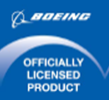
FSX Steam Edition: P-51H Mustang™ Add-On
The aircraft has been detailed inside and out down to the last rivet and features smooth 3D gauge technology, droppable external fuel tanks, working 3D collimating gun sight and authentically reproduced Merlin engine sounds.
Additional content
This is a DLC for Microsoft Flight Simulator X: Steam Edition.
Release
The P-51H differs from the P-51D primarily in performance. Its procedures are identical in many cases to the P-51D, and aircraft handling is very similar, with the H model having greater agility and a higher roll rate due to its substantially lighter weight and larger ailerons. The fuel capacity is lower on the H model because the fuselage tank was made smaller to reduce the negative impact on weight and balance from the excess weight being so far aft from the centre of gravity. However, the H model has a range similar to the D model because its airframe has slightly less drag, and the aircraft weighs considerably less than the D model. The P-51H was conceived and manufactured during WWII and would have seen combat had the war not ended in September, 1945. It was developed on a time line that was roughly concurrent with that of the Focke-Wulf Ta 152, and its performance was similar to the German aircraft. However, the P-51H, with its top speed of 487 mph at 25,000 feet, was substantially faster than either the Ta 152C or H models, by at least 15 mph. In addition, the P-51H incorporated many of the automatic features common to late-war German aircraft. It used a Simmonds control unit to maintain a constant manifold pressure relative to throttle position, eliminating the need for the pilot to 'chase' the throttle lever to maintain manifold pressure as the aircraft gained altitude. The supercharger switch from low to high speed was fully automatic, as were many of the controls related to the water injection and war emergency power.
Perhaps the greatest advantage the P-51H would have had over the Ta 152 is the fact that the Mustang remained a superlative dogfighter despite achieving parity of power and speed with the Ta 152. If anything, the P-51H was a nimbler, better handling aircraft than the P-51D, and its lighter weight would have allowed a tighter turning radius at high altitude than the German plane. In a dive or level flight, the P-51H was as fast or faster than any single-engine, propeller-driven Axis fighter ever built. The P-51H, although not well-known, was probably the finest piston-engined fighter to emerge from WWII in every respect and was probably the fastest propeller-driven aircraft in the world at the close of WWII.
Perhaps the greatest advantage the P-51H would have had over the Ta 152 is the fact that the Mustang remained a superlative dogfighter despite achieving parity of power and speed with the Ta 152. If anything, the P-51H was a nimbler, better handling aircraft than the P-51D, and its lighter weight would have allowed a tighter turning radius at high altitude than the German plane. In a dive or level flight, the P-51H was as fast or faster than any single-engine, propeller-driven Axis fighter ever built. The P-51H, although not well-known, was probably the finest piston-engined fighter to emerge from WWII in every respect and was probably the fastest propeller-driven aircraft in the world at the close of WWII.
- Experience the highest performance P-51 Mustang ever produced
- Built using the Microsoft Flight Simulator SDK for maximum compatibility
- Flight model performs to the pilot’s training manuals
- Includes detailed stall and spin characteristics
- Gorgeously constructed aircraft, inside and out, down to the last rivet
- High resolution, smooth 3D gauge technology
- Droppable external fuel tanks
- Working 3D collimating gun sight (another A2A first)
- Authentically recorded and reproduced Merlin engine sounds

Price
Max: 16,99€
~
Min: 16,99€
Item 1 of 7